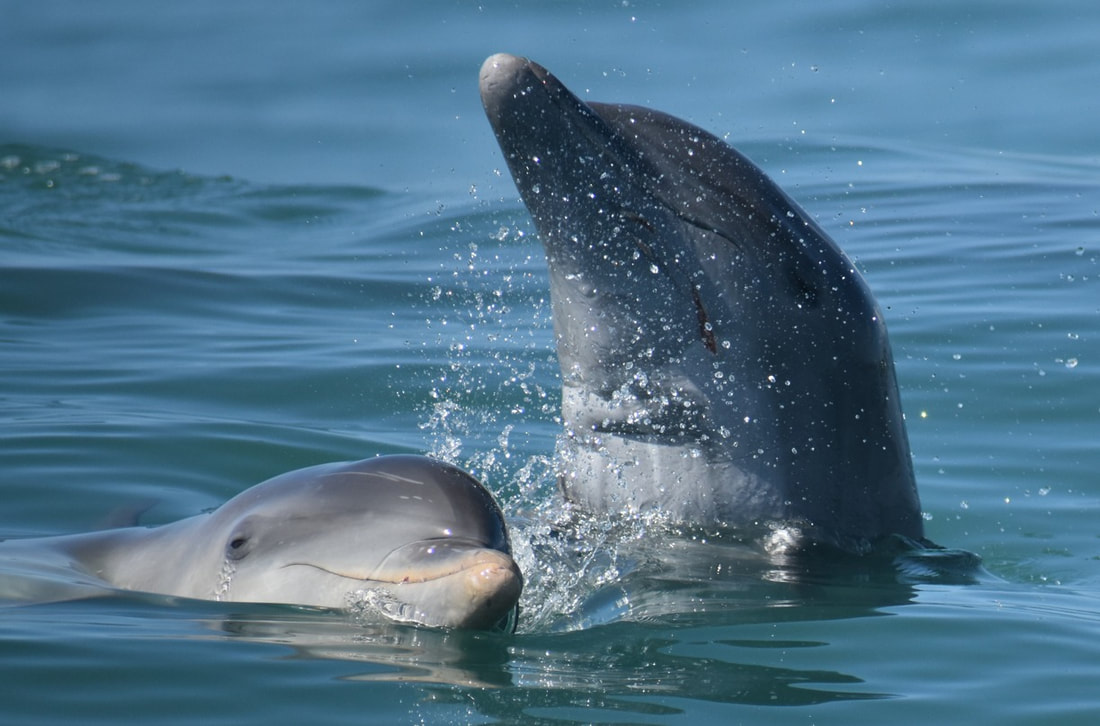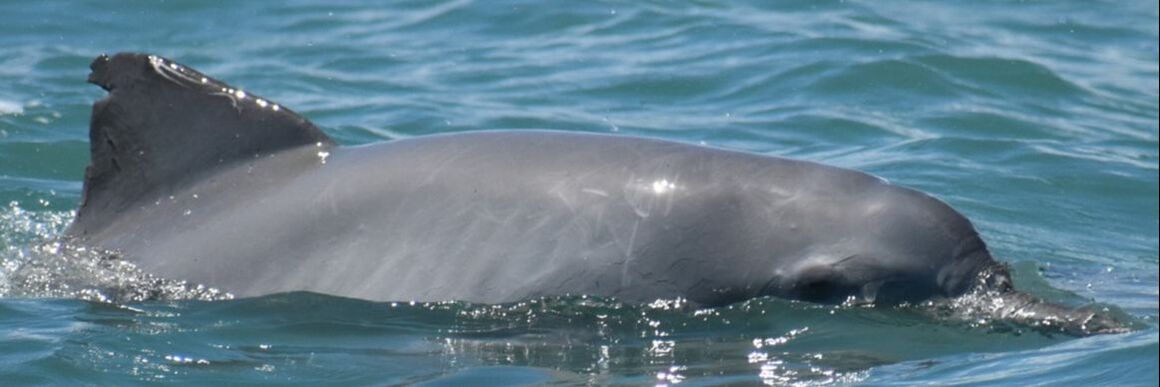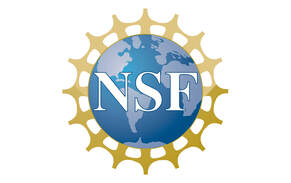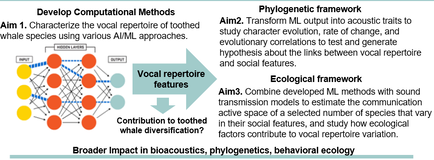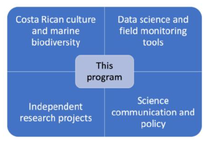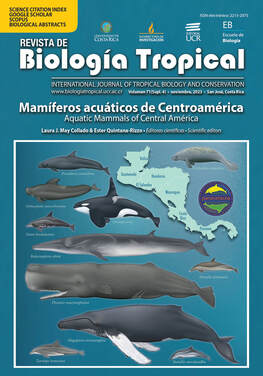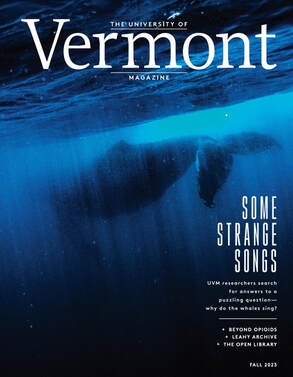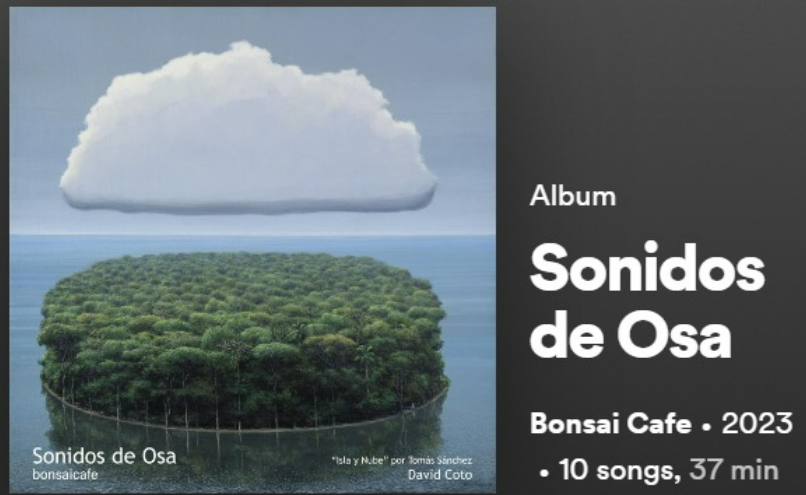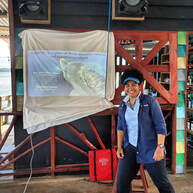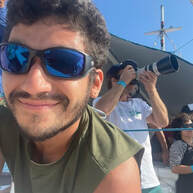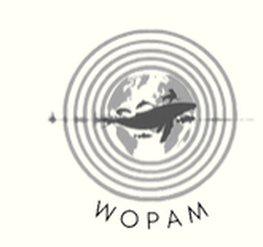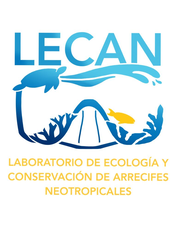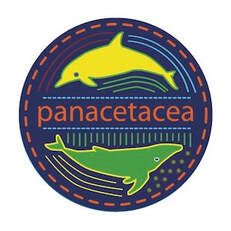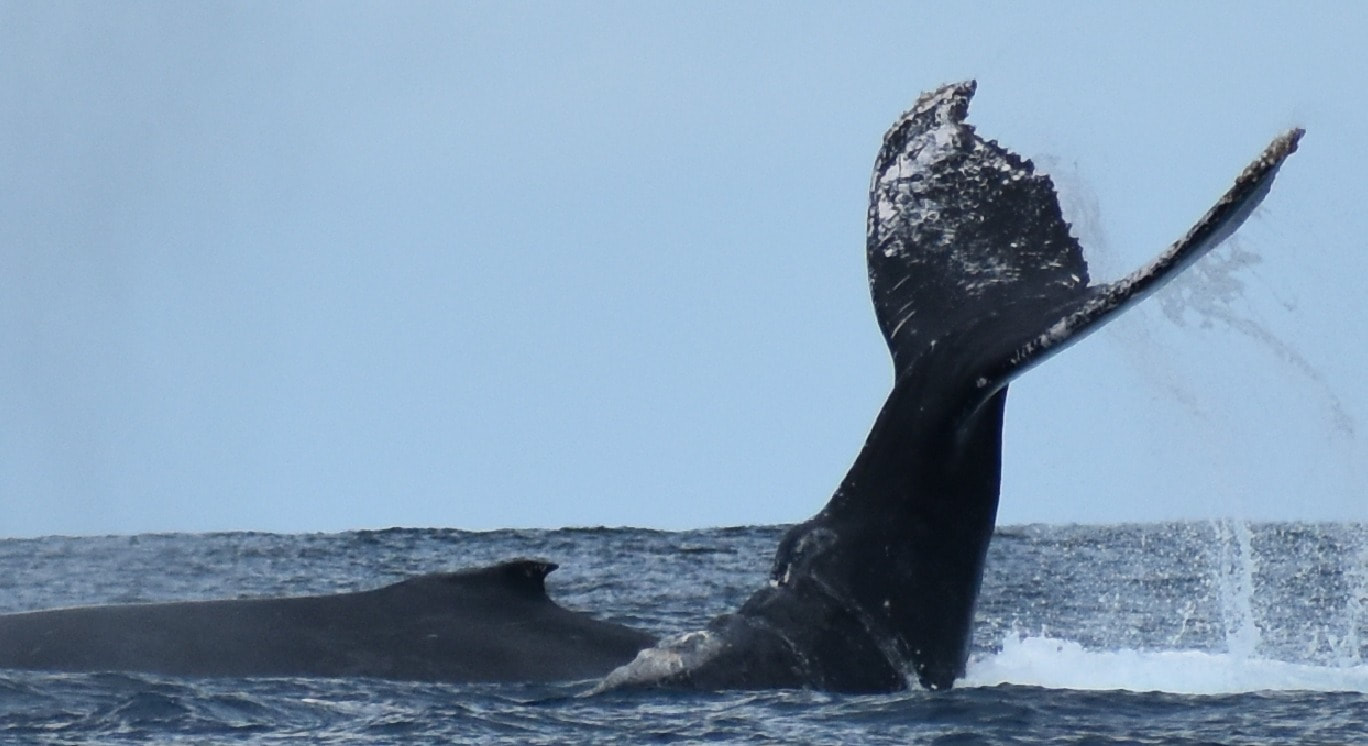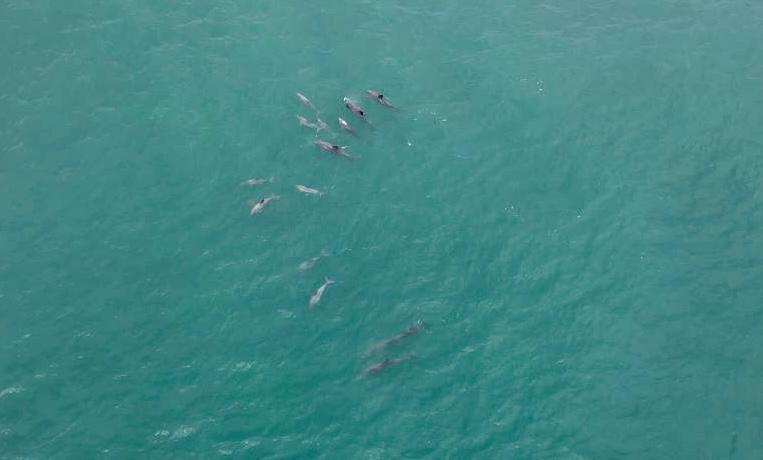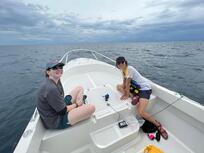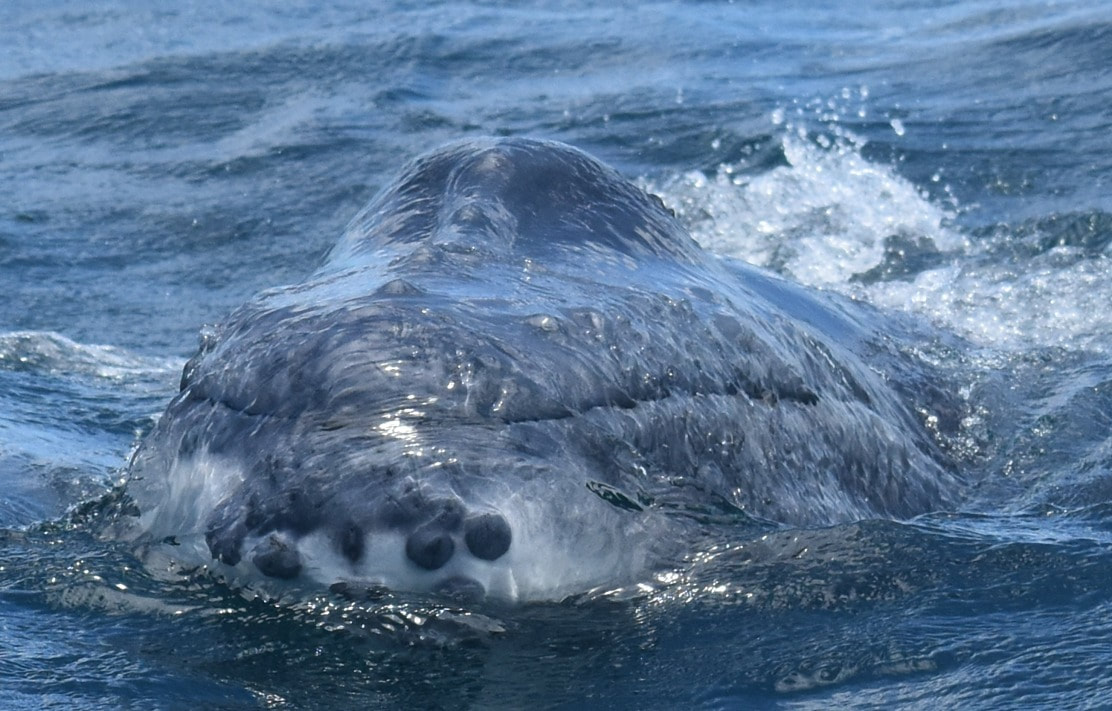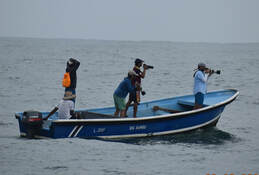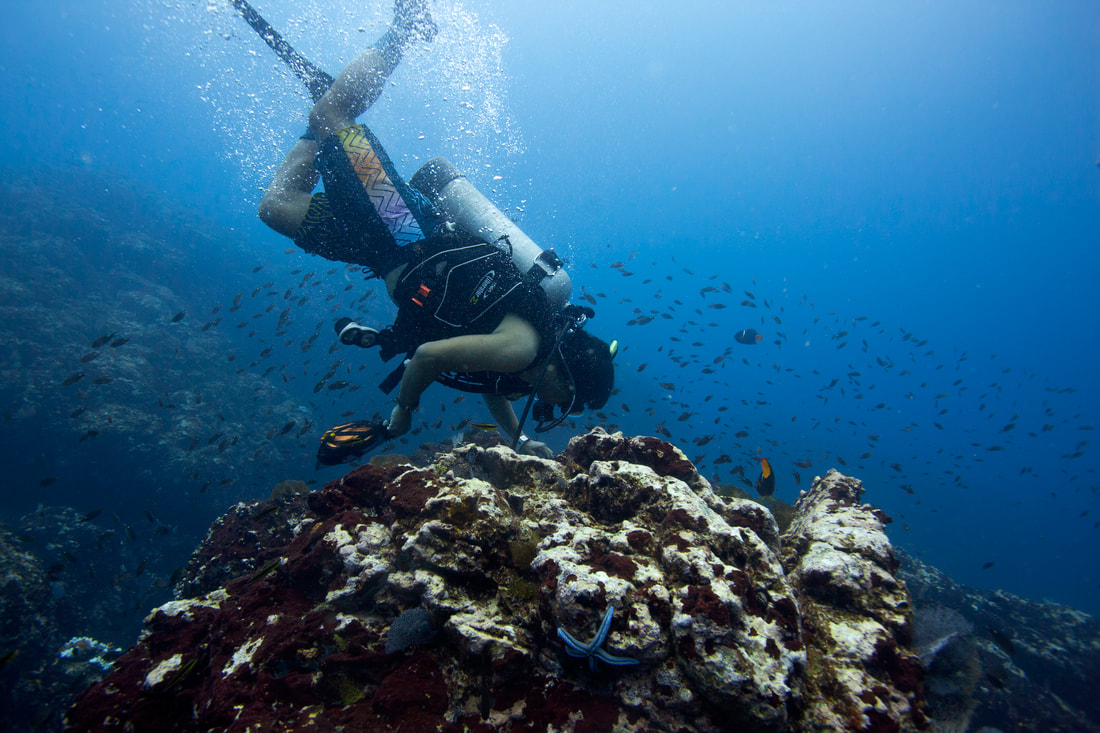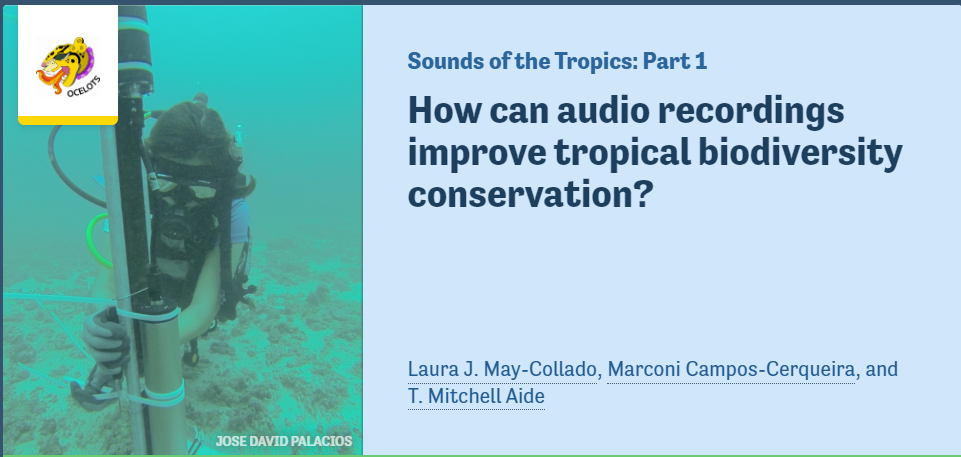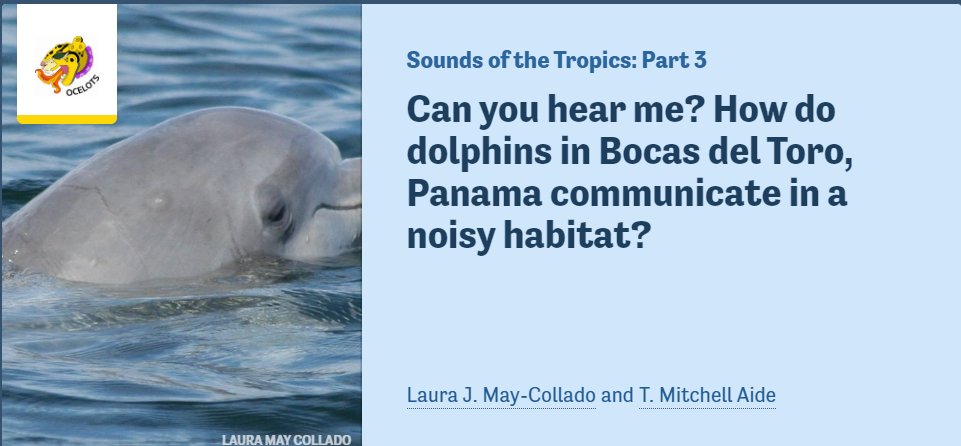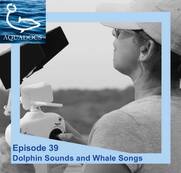The ONDAS Lab is committed to equity, justice, and inclusivity in STEM.
Assistant Professor
Department of Biology, University of Vermont.
Research Associate, Smithsonian Tropical Research Institute, SI.
Chair of the Committee of Scientific Advisors, The Society of Marine Mammalogy.
Member of the UVM SACNAS Chapter
Phone: (802) 656-4138
Office: 215 MLS; Lab 224
Department of Biology, UVM
Email: [email protected]
Department of Biology, University of Vermont.
Research Associate, Smithsonian Tropical Research Institute, SI.
Chair of the Committee of Scientific Advisors, The Society of Marine Mammalogy.
Member of the UVM SACNAS Chapter
Phone: (802) 656-4138
Office: 215 MLS; Lab 224
Department of Biology, UVM
Email: [email protected]
instagram: @maycolladolab
Interests: Evolution, Behavior, Conservation
I am a marine mammal evolutionary biologist researching the phylogenetic and ecological factors shaping the
acoustic repertoire of aquatic mammals. My research implements phylogenomics, field observations, autonomous underwater recording systems, unmanned aerial vehicles to study, and machine learning tools to study the diversity of communicative signals produced by aquatic mammals in their natural environment. Our research is done in collaboration with local scientists and students in Central America in an effort to ensure we contribute to the formation of the next generation of Hispanic marine mammal scientists in the region.
acoustic repertoire of aquatic mammals. My research implements phylogenomics, field observations, autonomous underwater recording systems, unmanned aerial vehicles to study, and machine learning tools to study the diversity of communicative signals produced by aquatic mammals in their natural environment. Our research is done in collaboration with local scientists and students in Central America in an effort to ensure we contribute to the formation of the next generation of Hispanic marine mammal scientists in the region.
Funding News!
CAREER: Unraveling the evolutionary history of toothed whale acoustic communication
|
IRES: Monitoring marine megafauna and coral reef communities using remote technologies
|
2024 Peer Review Publications
In bold lab members.
- Ramos, E. A., Tellez, M., Castelblanco-Martinez, N. and L.J. May-Collado. 2024. Antillean manatees feed on floating Halophila baillonii in Placencia, Lagoon, Belize. Latin American Journal of Aquatic Mammals 19 (1) https://doi.org/10.557/lajam00322.
- May-Collado, L. J., Rasmussen, K., Palacios-Alfaro, J. D., and F. Garita. First record of humpback whales in the Caribbean coast of Costa Rica. Under review. Latin American Journal of Aquatic Mammals.
Contributions to Inclusion in Science and Public Engagement
|
Sonidos de Osa is a collaboration between our lab and musicians from Costa Rica, a tribute to the whales and nature of Osa. | |||||||
Lab Highlights!
|
Congratulations to Dr. Perez! We wish you the best as you begin your journey as independent researcher and Panamanian leader of Panacetacea.
|
Sadly, Dr. Eric Ramos has concluded his postdoc in our lab studying feeding habits and acoustics of manatees in Belize. We wish you all the best in your exciting new job!
|
International Collaborations
|
LECAN is directed by Dr. Juan Jose Alvarado at UCR/CIMAR with whom we will be staring the IRES-NSF funded marine biology training program.
|
Our current fieldwork involves the continuation of the ONDAS Initiative by deploying more soundtraps and hydromoths in the Pacific and Caribbean coasts of Central America. The ONDAs project involves a series of studies on the communication and behavioral ecology of humpback whales (northern and southern populations) and toothed whales in the region, and the study of the soundscape of various marine communities. To follow our work in Instagram @maycolladolab.
|
|
|
|
Online Teaching Resources
Tedx and Social Media
|
|
|
|
|
Video source by Paulo Castro. https://peerj.com/articles/6670/
|
Great conversation with my dear friend Monika Naranjo Gonzalez in her Antarctica Podcast.
|

